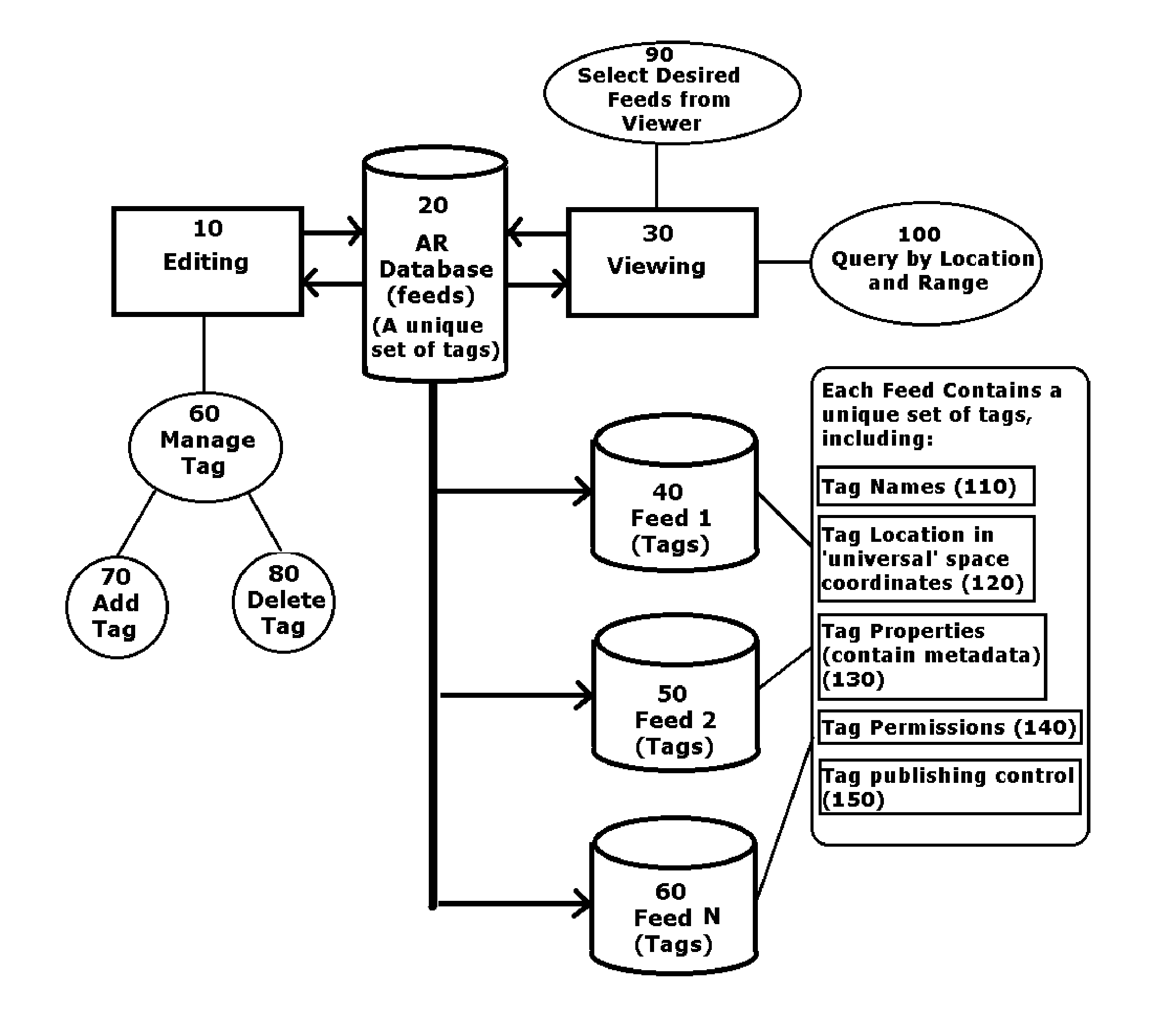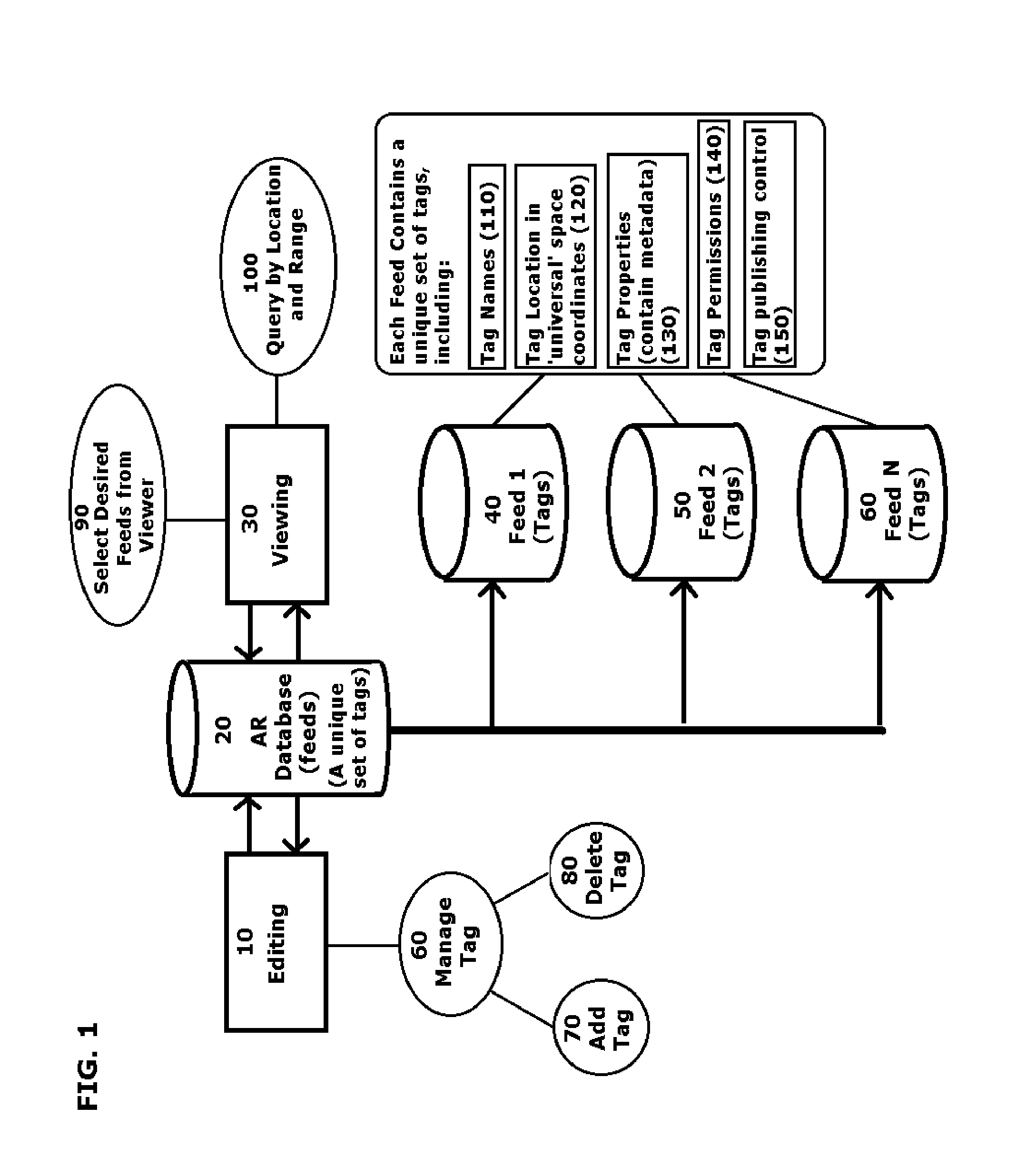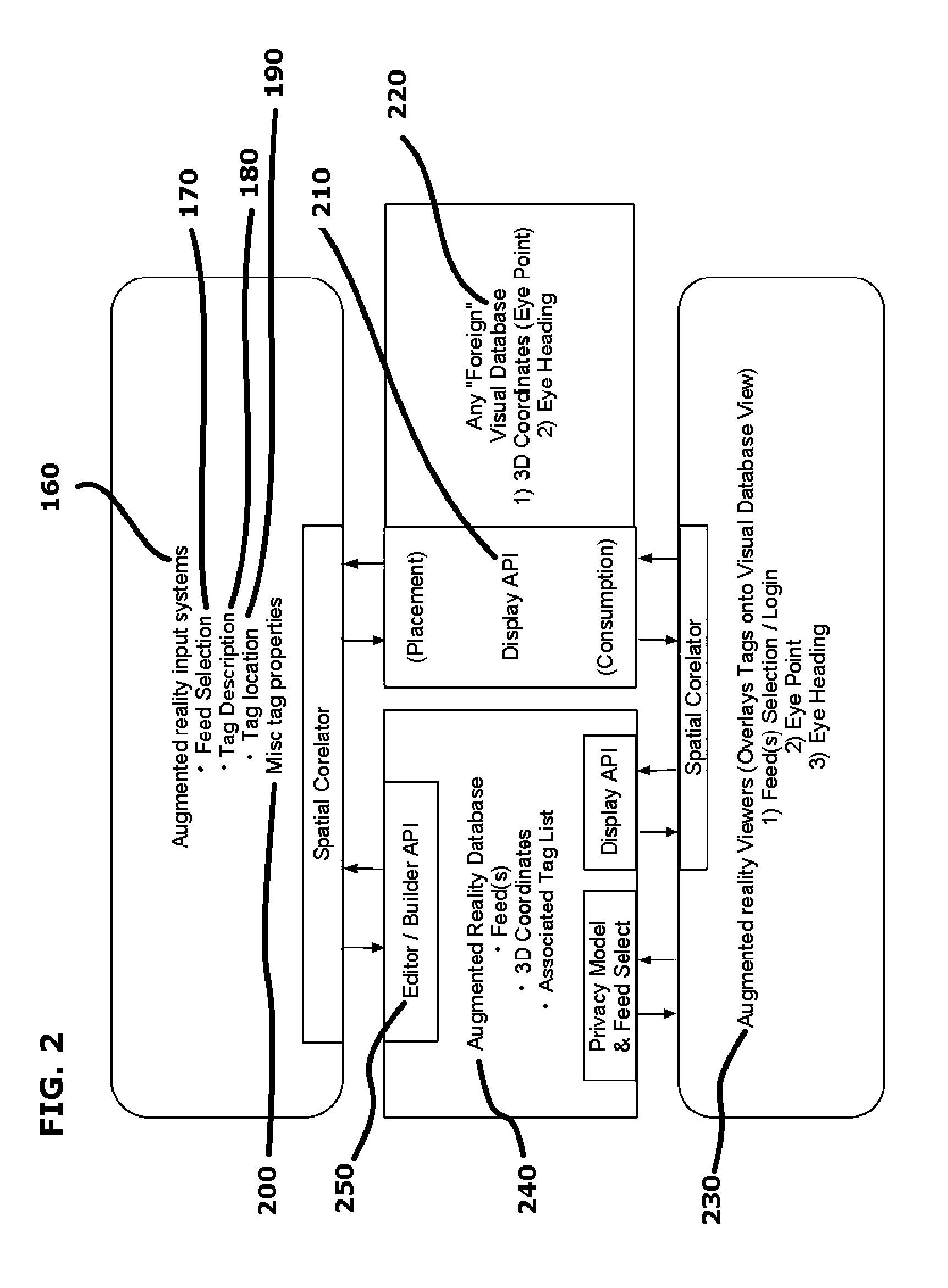Augmented Reality System
a technology of augmented reality and system, applied in the field of augmented reality, can solve the problems of limited dimensional data of tags and no provision or design ability
- Summary
- Abstract
- Description
- Claims
- Application Information
AI Technical Summary
Benefits of technology
Problems solved by technology
Method used
Image
Examples
Embodiment Construction
[0017]The present invention relates to an elaborate, advanced augmented reality system, configured to display tags as text, 2D graphics, audio, and video, as well as 3D objects necessarily exhibited in a 3D virtual environment. The present invention expands beyond the initial concept of augmented reality by introducing a virtual, three-dimensional element, both in the realm of tagging physical, real-world items and locations with a three-dimensional, virtual tag, and in the virtual realm of tagging virtual-world items and locations with three-dimensional virtual tags contained within the virtual world. The present invention enables the user to view multiple augmented reality streams simultaneously, also known as feeds (20) or, more commercially, channels, each depicting an alternately augmented reality based on the same location and item data (which is conventionally coordinate-based), housed in a geospatial database (220), connected to a secured server computer.
[0018]The augmented ...
PUM
 Login to view more
Login to view more Abstract
Description
Claims
Application Information
 Login to view more
Login to view more - R&D Engineer
- R&D Manager
- IP Professional
- Industry Leading Data Capabilities
- Powerful AI technology
- Patent DNA Extraction
Browse by: Latest US Patents, China's latest patents, Technical Efficacy Thesaurus, Application Domain, Technology Topic.
© 2024 PatSnap. All rights reserved.Legal|Privacy policy|Modern Slavery Act Transparency Statement|Sitemap



